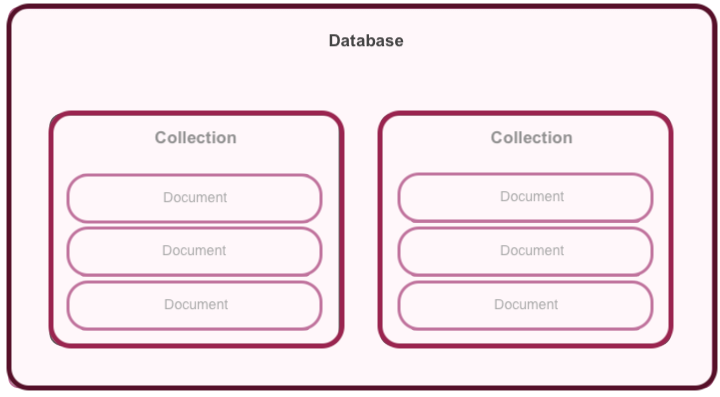Organisations of different scales and forms want to access the power of data by identifying new business opportunities and improving current business operations. When using data effectively, organisations can gain a potential advantage – the ability to make faster and more informed data-driven business decisions. All data operations, however, can become a problem, especially when it comes to software development and data management.
One of the best examples of organisations needing short software development lifecycle and outstanding data management is when building web applications. But as the applications modernise, more developers prefer adopting alternative data stores, such as NoSQL (Not Only Structured Query Language) because of their benefits. One of those data stores that can help organisations develop modern web-based applications is MongoDB.
MongoDB is a document-oriented NoSQL database. It is widely used for high volume data storage. Instead of traditional relational SQL database, which uses tables and rows, MongoDB makes use of collections and documents. Documents consist of key-value pairs, which are the basic unit of data in MongoDB. Document databases are the most popular alternative to tabular, relational databases. Collections contain sets of documents and function, which is the equivalent of relational database tables. MongoDB is a database which appeared on stage around the mid-2000s.

What are documents?
In MongoDB, the data records are stored as BSON documents. A document is a record in a document database. It usually stores information about one object and any of its related metadata. Furthermore, BSON stands for binary representation of JSON documents. However, it contains more data types as compared to JSON. The document is created using field-value pairs or key-value pairs and the value of the field can be of any BSON type.
{
field1: value1
field2: value2
....
fieldN: valueN
}
What are collections?
A collection can store a number of documents. A collection is analogous to a table of traditional relational DB.
Collections can store documents, that does not have same structure. This is enabled by the Schema-free characteristic of MongoDB. Database like MySQL, will require a schema, which defines the structure of data in a database. MongoDB does not require such. Therefore, it is possible to store documents of varying structures in a collection. You will not have to define a column and it’s datatype.
Why use MongoDB?
- Document-oriented: instead of having data in a relational type format, it stores the data in documents. This makes MongoDB very flexible and adaptable to real business world situation and requirements.
Scalability and load balancing: MongoDB is load balancing by using Sharding. It is scaling horizontally by splitting data across multiple MongoDB instances. MongoDB is able to run over multiple servers, balancing the load and/or duplicating data to keep the system up and running in case of hardware failure.
- Indexing: Indexes can improve the performance of searches within MongoDB. Any field in a MongoDB document can be indexed.
Get Started Quickly: MongoDB has an amazing user experience for developers who can install MongoDB and start writing code immediately.
Advantages of using MongoDB
The Power of Document-Oriented Databases
Storing data in document-oriented databases has many benefits. Not only is the information stored in its natural form, but it is also human-readable. One can use MongoDB to store structured and unstructured information in the same document, and/or use nested JSONs to store complex data objects.
As JSON has a flexible and dynamic schema, adding or leaving fields out is not a problem. Furthermore, JSON is a simple and powerful way to describe and store data. That is why many developers find it easy to work with, as they control the database schema. They can adjust and reformat the schema as the application grows and evolves without a DB administrator
MongoDB has created Binary JSON format (BSON) to support more data types than JSON. This format enables faster parsing of the data. Data stored in BSON can be searched and indexed, thus increasing the performance.
Transactionality and Speed
As mentioned above, MongoDB stores records as documents gathered together in collections. A database can hold one or more collections of documents.

Document-based data model can represent rich, hierarchical data structures. Using this model it is possible to manage data without complicated multi-table joins, traditionally used by relational databases. For example, suppose you’re modelling items for an e-commerce web application.
With a traditional relational data model, your products’ information might consist of multiple tables. If you have to retrieve some important product information, this can’t happen without a complicated SQL query full of joins. This can increase complexity in the database setup and slow down development time and the end application.
In comparison to a document database, you can model the information within a single document with an understandable representation of the products with a hierarchy.
Furthermore, MongoDB offers an efficient way to search data with text, geospatial, or time-series dimensions. It also includes features to analyse data, including support for multiple concurrent queries, indexing, and aggregation.
Scalability and High Availability
MongoDB can handle high traffic and adjust to user demand, which is essential when web applications, sites and services become more popular. Therefore, MongoDB is built on a horizontal scale, by adding more servers to distribute the load across multiple nodes. Furthermore, MongoDB uses sharding and replica set features to achieve horizontal scaling.
A replica set consists of two or more mongo DB instances. Each replica set can act as primary or secondary replica at any time. The primary replica is used as the main server. It interacts with the client and performs all the read/write operations. The secondary replicas hold a copy of the data of the primary using built-in replication. If the primary replica would fail, the replica set automatically switches over to the secondary, which then becomes the primary server.
These features ensure that MongoDB can provide scalability and high availability of modern web applications, which are needed to handle a heavy workload and ensure consistent response times. Relational databases, on the other hand, might be complicated to set up in a way that can distribute data across multiple systems and scales horizontally, mainly because of the relational data model.
Summary
MongoDB has been widely used in different organisations and use cases, which makes it one of the most popular NoSQL databases. Being a highly flexible data management solution, MongoDB enables opportunities for agility, flexibility and scaling, which can ensure rapid development and low downtime operations.
